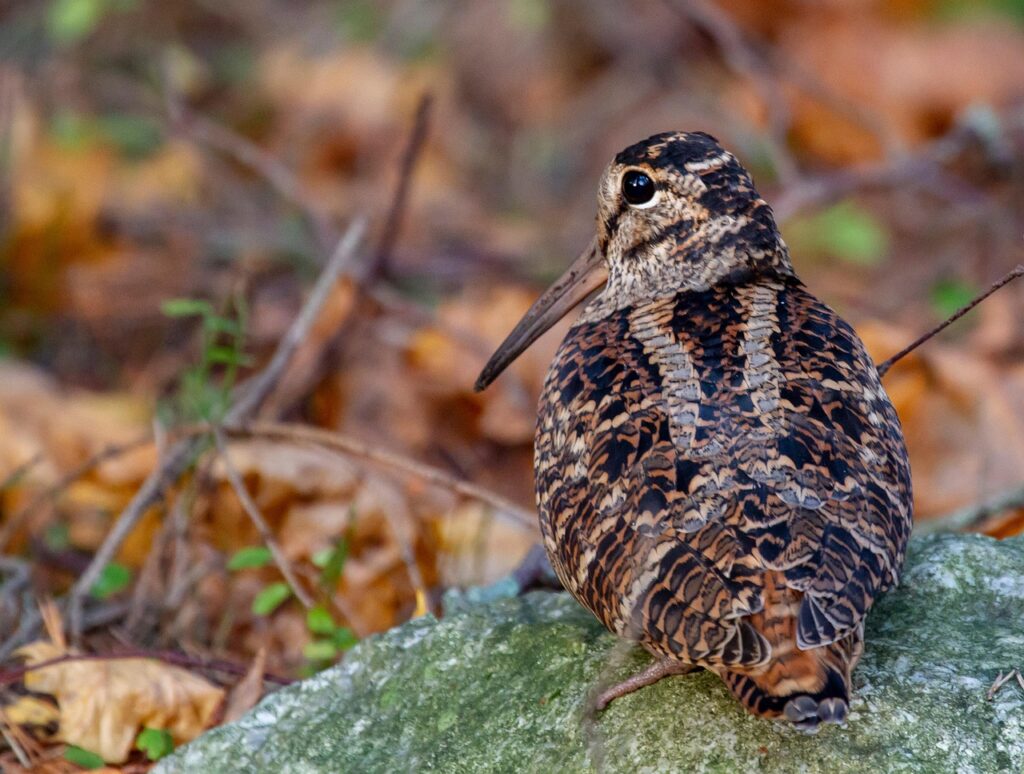Eurasian Woodcock (Morkulla)

Characteristics:
The Eurasian Woodcock is a medium-sized wader (length 33–35 cm) with a compact body, short legs, and a long, straight bill (6–8 cm).
Its plumage is mottled brown, grey, and black, providing excellent camouflage in woodland habitats.
The eyes are set high and far back on the head, giving it almost 360° vision — an adaptation to detect danger from all directions.
The species is generally silent, though it may utter a short “chorrt” or “psch” when flushed.
Habitat:
The Woodcock is found throughout Sweden, most common in southern and central regions.
It prefers damp mixed or deciduous forests, woodland edges, and areas with rich ground vegetation.
During migration, it can also be seen in fields and meadows.
Behaviour:
The Woodcock is crepuscular and nocturnal.
It rests hidden on the forest floor by day and becomes active at dusk and dawn.
Outside the breeding season, it is solitary.
Diet:
The Woodcock feeds mainly on earthworms, insects, larvae, and small invertebrates, which it extracts by probing moist soil with its long bill.
Reproduction:
Breeding takes place in April–May.
The female lays four brown-spotted eggs directly on the ground in a simple hollow, often among leaves or moss.
Incubation lasts about 21 days, and the chicks leave the nest immediately after hatching, staying with the female for several weeks.
Migration:
The Woodcock is a migratory species.
Most Swedish birds migrate to Western Europe (mainly France, England, and Spain) for the winter.
Migration occurs in October–November, and the birds return in March–April.
Distribution:
Widespread across Europe and Asia.
In Sweden, it is most common in southern and central regions, but occurs as far north as Norrbotten in summer.
Hunting:
The Woodcock is a game species in Sweden according to the Hunting Ordinance (Bilaga 1).
Hunting season:
- Southern Sweden: 16 August – 30 November
- Northern Sweden: 25 August – 30 November
Hunting is typically done with shotgun, targeting rising birds at dusk or during autumn migration.
Firearm class (Sweden):
The species may be hunted with:
- Shotgun, typically using pellet size no. 7–9.
- (Rifle class 4 is permitted but rarely used for this species.)
Think for the hunting exam:
- Medium-sized, brown-mottled wader with a long straight bill.
- Eyes set far back → almost 360° vision.
- Found in moist forests and woodland edges.
- Eats earthworms and invertebrates.
- Migratory bird, returns in spring and leaves in autumn.
- Game species – hunting season August–November.
- Hunted with shotgun (pellet size 7–9).
- Requires fast reflexes and skill – flies low and unpredictably.
